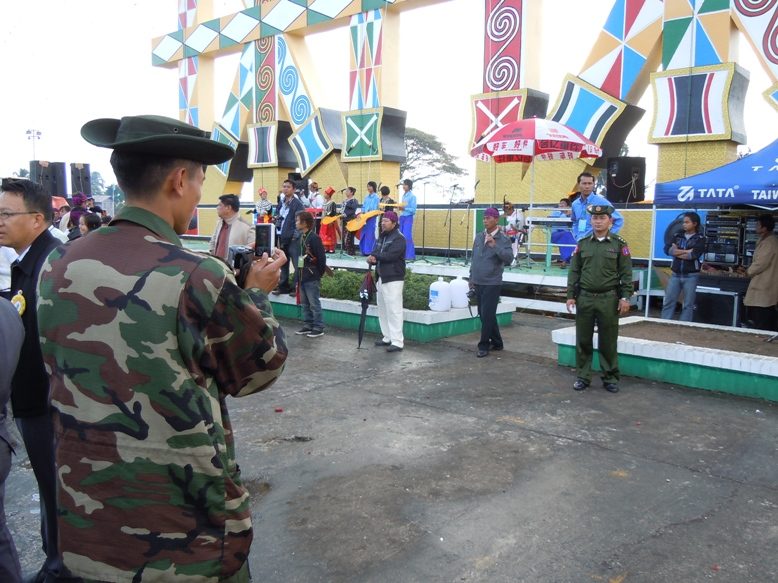This column was published at The Myanmar Times on Monday, 15 June 2015
During almost 50 years of military dictatorship, the Tatmadaw didn’t ask to be liked. Its power grew from the barrels of a million guns and the steady march of those who wore its uniforms.
It crushed dissent in the cities, kept rebels on the run in the mountains and sought to build high walls around one version of Myanmar culture. Even those who served the old regime often tired of its inefficiency, brutality and narrow-mindedness. While some may have grudgingly respected the senior military leadership, they never commanded much genuine affection.
In recent times, the Tatmadaw’s public image has been boosted by the upbeat reception of political change. Retired Senior General Than Shwe, and his former subordinates like U Thein Sein, Thura U Shwe Mann and U Khin Aung Myint, now benefit from the idea that positive changes have resulted from their late-career creativity.
Many Myanmar citizens still resent the incompleteness of reform, and the ongoing guidance of serving and retired military figures, but they usually accept that today’s liberalisation would not have happened without the imprimatur of top military figures.
We can also be thankful that those in power have created a system where it is increasingly possible to gauge the popular mood. This is especially so online, where Myanmar citizens are emboldened to broadcast their feelings.
We saw this back in 2011 when the Kachin Independence Army’s ceasefire with the government broke down. On Facebook, KIA sympathisers began changing their avatars from the standard happy snaps to the defiant crossed-swords flag of the rebel group. In certain corners of the Jinghpaw-speaking internet, hundreds of these martial flags fluttered as symbols of digital solidarity.
Earlier this year when a new round of fighting erupted with the Kokang in northern Shan State, we saw another outpouring of public support for an armed group. This time it was the Tatmadaw’s Northeast Region Command that received the positive attention.
People quickly switched their profile pictures to reflect their encouragement for Tatmadaw units slugging it out with the Myanmar National Democratic Alliance Army.
Tatmadaw personnel themselves, including some serving on the frontlines, took to social media to share their stories and perspectives. In cities and towns across Myanmar, people have tuned in to these largely unfiltered versions of events. Judging by the comments, many feel common cause with the Tatmadaw’s ordinary fighting men.
At the elite level, it is also possible to see the military’s workings up-close online. Senior General Min Aung Hlaing maintains a busy Facebook presence: Just shy of 200,000 people “like” him, with thousands more added every week. They all receive semi-regular updates on what the Tatmadaw’s top general has been doing. His Facebook page is filled with the predictable visits to temples, command inspections and meetings with foreign delegations.
There are also trips to see wounded Tatmadaw personnel convalescing in military hospitals, ribbon-cuttings for gleaming military facilities and reviews of shiny imported equipment.
With so many Myanmar internet users curating their lives through their Facebook feeds, it makes sense for the senior general to provide such snapshots. He joins former military figures like Pyidaungsu Hluttaw Speaker Thura U Shwe Mann (73,000 “likes”) and Minister for Information U Ye Htut (who has already broken the 200,000 “likes” barrier), who have cultivated large Facebook followings.
Still, they each have work to do to catch Daw Aung San Suu Kyi, whose relatively subdued Facebook presence – her last post was on January 26 – has more than 1 million “likes”.
As well as managing expectations in the shadow of Myanmar’s most famous political figure, there are other challenges for the Facebook generation of military leaders.
First of all there are the risks that an accessible online presence entails. A misstep could quickly lead to public backlash, which has the potential to run away in the unregulated spaces of the internet. The mocking presentation of North Korean leader Kim Jong-un’s inspection photos shows what a meme can do to deride the powerful.
But those risks are clearly being tolerated, especially as the internet now gives the Tatmadaw a chance to tell its story in fresh ways.
For decades military leaders could rely on the sanitised television, radio and print media for their public statements. But their voices were rarely heard and personalities almost never glimpsed; people came to ignore what was readily dismissed as abject propaganda.
The internet offers directness and immediacy, mixed up with all manner of anarchic possibilities. Deft use of these platforms might generate a new level of popular support, but it is just as likely to reinforce the idea that the top generals remain a caste set apart.
In this election year, the Tatmadaw will need to be careful that its hunger for attention does not create a sense that its leaders are simply using the tools of the Facebook age to reinforce their 20th-century dominance.
Nicholas Farrelly is the Director of the Australian National University’s Myanmar Research Centre.
 Facebook
Facebook  Twitter
Twitter  Soundcloud
Soundcloud  Youtube
Youtube  Rss
Rss 